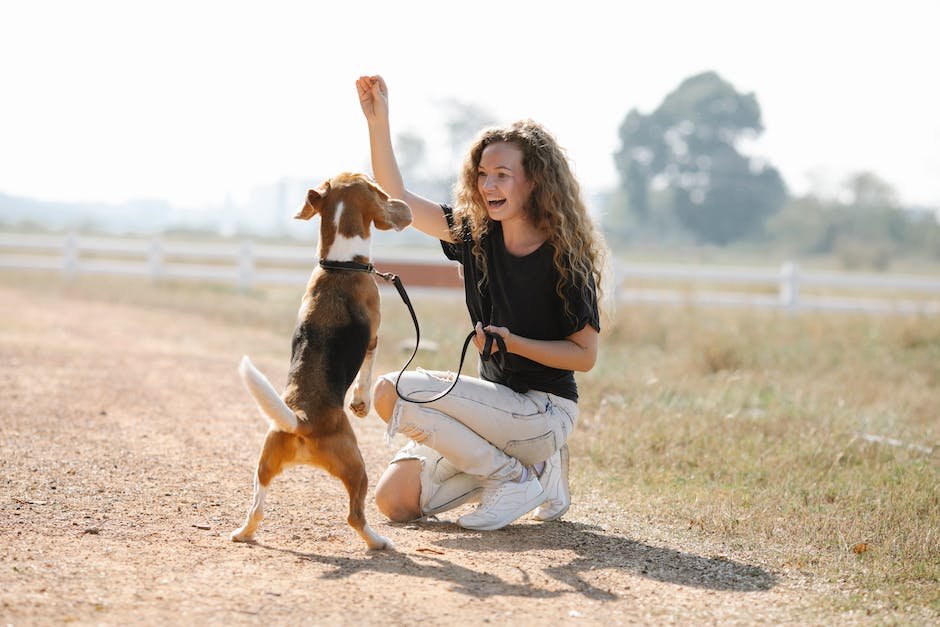Specialized dog training is a harmonious blend of artistry and science, where the human-canine connection becomes an intricate dance of communication. As we delve into this captivating world, we uncover the profound role that communication plays in transforming dogs into remarkable companions and guardians. Beyond mere commands and gestures, communication is the ethereal language that weaves understanding, trust, and harmony between dog and handler. In this article, we will explore the multifaceted facets of communication in specialized dog training, delving into the nuances, techniques, and extraordinary bond that develops when humans and dogs converse in their own unique way. Welcome to the captivating realm where words and gestures are but fragments of a mutually enriching dialogue between two different species.
Table of Contents
- Decoding Communication Cues: A Key to Specialized Dog Training
- The Power of Non-Verbal Communication in Canine Training
- Building Trust and Connection through Effective Communication Techniques
- Tailoring Communication Strategies for Individual Dogs’ Specialized Training Needs
- Enhancing Dog-Human Bond through Clear and Consistent Communication
- Q&A
- In Summary

Decoding Communication Cues: A Key to Specialized Dog Training
When it comes to training our four-legged friends, understanding their communication cues is paramount. Dogs have a unique way of expressing themselves, and decoding these cues is the key to successful specialized training. By paying close attention to their body language, vocalizations, and expressions, we can better understand their needs and effectively communicate with them.
Body language:
- Tail wagging: Contrary to popular belief, a wagging tail does not always indicate a happy dog. The position, speed, and direction of the wag can convey different messages. A high, stiff wag may indicate aggression or alertness, while a low, relaxed wag suggests friendliness or submission.
- Ear position: The position of a dog’s ears can reveal their mood. Forward and erect ears signify attentiveness, while flattened ears indicate fear or anxiety.
- Eye contact: Dogs use eye contact to convey their intentions. Steady eye contact can be a sign of dominance or challenge, while averting their gaze may signal submission or discomfort.
Vocalizations:
- Barking: Dogs bark for various reasons, and each type of bark carries a different meaning. A sharp, repeated bark may indicate a warning or a desire to play, while a low and prolonged bark may signal fear or frustration.
- Whining: Whining is often a way for dogs to express dissatisfaction, discomfort, or even excitement. It can be accompanied by body language such as pawing or jumping.
- Growling: Growling is a clear sign of aggression or frustration. It is essential to address the cause of the growling promptly and appropriately, as it can escalate into a dangerous situation if ignored.
Expressions:
Dogs have incredibly expressive faces, and their facial expressions can communicate a wealth of information. A relaxed, open mouth with a slightly lolling tongue usually indicates a friendly and approachable demeanor. Conversely, a tightly closed mouth, wrinkled forehead, or bared teeth may suggest fear, discomfort, or aggression. Paying attention to these subtle cues can help us gauge the emotional state of our canine companions.

The Power of Non-Verbal Communication in Canine Training
When it comes to training our furry companions, words aren’t always necessary. is unparalleled. Our four-legged friends have an incredible ability to pick up on subtle cues and gestures, making non-verbal communication an essential tool in building a strong bond with them.
Physical cues: Dogs are incredibly perceptive to body language. The way we carry ourselves, our posture, and even our facial expressions can convey a wealth of information to our canine companions. Maintaining an open and relaxed posture can help to establish trust and create a positive training environment.
Gestures and signals: Just like humans, dogs are visual creatures. Utilizing hand signals can be an effective way to communicate with our furry friends. Simple cues such as a raised hand for “sit” or a pointing finger for “stay” can help dogs understand what we expect from them. Consistency is key when using gestures, as dogs thrive on repetition and routine.
- Eye contact: The eyes are often referred to as the windows to the soul, and in the realm of canine communication, this holds true. Dogs interpret direct eye contact as a sign of leadership and assertiveness. Establishing eye contact during training sessions can help grab their attention and command their focus.
- Touch and rewards: Physical touch plays a crucial role in non-verbal communication. Gentle strokes and pats can reinforce positive behavior and make dogs feel loved and valued. Additionally, rewards such as treats or toys serve as powerful motivators and create positive associations with desired actions.
In conclusion, non-verbal communication is an essential aspect of effective canine training. By mastering the art of non-verbal cues, we can build a strong and harmonious relationship with our furry friends, promoting trust, understanding, and successful training outcomes.

Building Trust and Connection through Effective Communication Techniques
Effective communication is a vital key to building trust and fostering strong connections with others. By mastering certain techniques, you can enhance your ability to communicate effectively and form meaningful relationships. Here are some strategies that can help you establish rapport, build trust, and create connections:
- Active Listening: Listening intently and attentively is the foundation of effective communication. It involves giving your full focus to the speaker, maintaining eye contact, and avoiding distractions. By actively listening, you demonstrate respect and genuine interest, which in turn builds trust and reinforces the connection between you and the person you are communicating with.
- Emotional Intelligence: Understanding and empathizing with others’ emotions is a valuable skill when it comes to building trust and connection. Emotional intelligence allows you to recognize and respond to the feelings of others, showing them that you value their emotions and concerns. By acknowledging their emotions, you create a safe and open environment, strengthening the bond between you.
- Clear and Concise Communication: Using clear and concise language helps avoid misunderstandings and confusion. When communicating, ensure your message is straightforward, well-organized, and easy to understand. Strive to express yourself in a respectful and considerate manner, using appropriate tone and body language. By doing so, you build trust and facilitate effective communication with others.
By implementing these techniques in your interactions, you can establish a solid foundation for trust and connection. Remember, effective communication is a continuous learning process that requires practice and openness. By being present in your conversations, empathetic towards others, and mindful of your communication style, you are on your way to building strong and lasting relationships.
Tailoring Communication Strategies for Individual Dogs’ Specialized Training Needs
When it comes to training dogs, it is important to understand that each furry companion is unique in their own way. Just as humans have different learning styles and preferences, our four-legged friends also require personalized communication strategies to meet their specialized training needs.
1. Observation: The first step in tailoring communication strategies is to carefully observe and understand the dog’s behavior, body language, and responses to various stimuli. This allows trainers to gauge their level of comfort, fears, and motivations, thereby enabling the creation of an effective training plan.
2. Adaptability: It is crucial for trainers to remain adaptable and flexible in their approach. Different dogs may respond better to visual cues, verbal commands, or a combination of both. By identifying and adapting to the dog’s unique preferences, trainers can fine-tune their communication style to elicit the desired behavior.
3. Positive Reinforcement: Dogs, like humans, are motivated by rewards. Using positive reinforcement techniques, such as treats, toys, or praise, can help reinforce desired behaviors and strengthen the bond between the trainer and the dog. This approach not only fosters a positive learning environment but also encourages the dog to actively engage in the training process.
Ultimately, by tailoring communication strategies to address individual dogs’ specialized training needs, trainers can effectively unlock their full potential and create a harmonious partnership based on mutual understanding, trust, and respect.
Enhancing Dog-Human Bond through Clear and Consistent Communication
Creating a strong bond between humans and their furry companions is essential for a harmonious and fulfilling relationship. One of the key factors in enhancing this bond is through clear and consistent communication. Dogs, being intelligent and social creatures, thrive on understanding and being understood by their human counterparts.
When it comes to communication, it’s crucial for dog owners to establish a common language with their four-legged friends. This can be achieved through a combination of verbal cues, body language, and hand signals. Consistency is key in ensuring that dogs comprehend and respond appropriately to these cues.
In order to effectively communicate with your dog, consider incorporating the following practices:
- Positive Reinforcement: Reward your dog’s desired behaviors with treats, praise, or playtime. This serves as a powerful tool for reinforcing good behavior and strengthening the bond between you and your furry friend.
- Clear Commands: Keep verbal cues concise and consistent. Use simple words or phrases like “sit,” “stay,” or “come” and pair them with hand signals or gestures to make the communication more understandable for dogs.
- Non-Verbal Cues: Pay attention to your body language and use it to communicate with your dog. Maintain an open and relaxed posture when you want to convey calmness, and use sharp, quick movements to express urgency.
- Active Listening: Dogs communicate through their own body language, barks, and whines. Take the time to observe and understand their cues. By doing so, you can respond appropriately and show your dog that their needs are being acknowledged.
By honing your communication skills and implementing clear, consistent cues, you can foster a deep connection with your dog. Building a strong bond based on effective communication ultimately leads to a happier and more harmonious partnership between humans and their loyal four-legged companions.
Q&A
What is the role of communication in specialized dog training?
Communication plays a crucial role in specialized dog training as it allows trainers to effectively convey commands, instructions, and desired behaviors to the dog. Clear and consistent communication helps establish a strong bond between the trainer and the dog, leading to successful training outcomes.
How does effective communication contribute to the success of specialized dog training?
Effective communication ensures that the dog understands what is expected of them, making the training process smoother and more efficient. It enables trainers to provide timely feedback and reinforcement, helping the dog learn and retain new behaviors more effectively.
What are some communication strategies used in specialized dog training?
Positive reinforcement, such as using treats or praise, is a valuable communication strategy to reinforce desired behaviors. Clear verbal cues and hand signals are also commonly used to facilitate effective communication between trainer and dog.
Why is it important to use consistent communication during specialized dog training?
Consistent communication promotes clarity and understanding for the dog, making it easier for them to learn and follow commands. It helps avoid confusion and ensures that the dog receives clear signals about what behaviors are expected from them.
How does non-verbal communication play a role in specialized dog training?
Non-verbal communication, such as body language and facial expressions, plays a vital role in dog training. Dogs are highly perceptive to human body language, so trainers must use consistent and appropriate non-verbal signals to effectively convey their intentions and commands.
Can miscommunication hinder the success of specialized dog training?
Yes, miscommunication can lead to confusion and misunderstanding, making it difficult for the dog to learn and respond correctly. Inconsistent or unclear signals may result in undesired behaviors or a lack of progress in training.
Are there any challenges associated with communication in specialized dog training?
Yes, communication challenges can arise when trainers and dogs have different learning styles or when the dog has previous training experiences that differ from the specialized training methods. Patience, adaptability, and understanding are important in overcoming these challenges.
How can trainers improve their communication skills for specialized dog training?
Trainers can improve their communication skills by seeking professional guidance, attending specialized training workshops, and practicing consistent and clear communication techniques. Building a strong bond with the dog and understanding their individual needs also enhances communication effectiveness.
In Summary
As we delve into the fascinating world of specialized dog training, one thing becomes abundantly clear: communication is the key that unlocks the hidden potential within our furry companions. From obedience to service, agility to therapy, the intricate art of dog training is intrinsically tied to our ability to establish trust, understanding, and connection through effective communication.
Throughout this article, we have explored the importance of clear verbal and non-verbal cues in providing dogs with a solid foundation for learning. Like an enchanting duet, trainers and their canine counterparts harmonize their way towards success, exchanging information through subtle gestures, firm commands, and gentle rewards. They dance under the light of comprehension, where words are not mere sounds, but a language understood in the depths of their souls.
Feeding off the magic of empathy and patience, skilled trainers harness the melody of communication to shape minds and behaviors, nurture talents, and bring out the very best in their four-legged students. Through immaculate timing and grace, they navigate the ever-changing landscape of canine inclination, tuning their commands and guidance to match the unique personality and aptitude of each dog.
But communication in specialized dog training is not solely about transmitting information from human to hound. It extends to the empathetic bond that intertwines hearts, forging an unbreakable connection that transcends the barriers of species. An unwavering eye contact, a gentle touch, or a shared moment of understanding can speak a thousand words in the silent dialogue of partnership.
As we conclude our exploration into the vital role of communication in specialized dog training, we are reminded of the countless success stories witnessed in training arenas and everyday life. Dogs, once deemed untrainable, have transformed into beacons of light and hope for many individuals with disabilities, fear, or trauma. These life-changing transformations are testament to the incredible power of effective communication in shaping not only our furry friends but also our own lives.
In the vast universe of specialized dog training, where the boundaries of possibility are ever-expanding, we discover that communication is the epitome of art. It is a symphony that bridges minds, breaks down barriers, and allows dogs and humans to journey together towards mutual understanding, growth, and companionship.
So, let us continue to unravel the mysteries of communication in specialized dog training, for in doing so, we unlock a world of boundless potential, a world where dogs become teachers, and humans become attentive students. Through the beauty of understanding, our canine companions guide us towards a harmonious existence, forever changing the way we view the capabilities and depths of communication.
As an affiliate, my content may feature links to products I personally use and recommend. By taking action, like subscribing or making a purchase, you’ll be supporting my work and fueling my taco cravings at the same time. Win-win, right?
Want to read more? Check out our Affiliate Disclosure page.